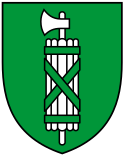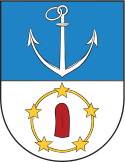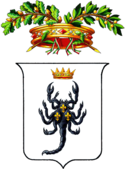Handbook of ornament; a grammar of art, industrial and architectural designing in all its branches, for practical as well as theoretical use (1900) (14781390481)
Identifier: handbookoforname1900meye (find matches)
Title: Handbook of ornament; a grammar of art, industrial and architectural designing in all its branches, for practical as well as theoretical use
Year: 1900 (1900s)
Authors: Meyer, Franz Sales, 1849-
Subjects: Decoration and ornament Art objects
Publisher: New York, B. Hessling
Contributing Library: Wellesley College Library
Digitizing Sponsor: Wellesley College Library
View Book Page: Book Viewer
About This Book: Catalog Entry
View All Images: All Images From Book
Click here to view book online to see this illustration in context in a browseable online version of this book.
Text Appearing Before Image:
on must be paid to this point, so that the unity of style may bepreserved between shield and charges They are mostly shown in profile,and vigorously drawn and outlined. The tinctures, at least in olderheraldry, are not those of nature, but one of the nearest heraldictinctures, so that the idealisation extends not only to the form butalso to the colour. Complicated objects are often comparatively sim-plified; trees, for example, appear with few leaves and fruits, &c. Some charges, such as the lion and eagle, are of extremely fre-quent occurrence; others the following are rarer. Among animals the following are represented: — Plate 284. 1. The Lion (rampant) with open jaws and protruding tongue; the body lean, especially towards the hinder quarters; the tailcurled upwards, natural or split, but not arbitrarily; the teeth,claws, &c. are gules on metal, or and argent on colors; theentire figure is generally or or gules, more rarely sable, andstill more rarely azure. HERALDRY. 511
Text Appearing After Image:
Charges. Plate 284. 512 Charges. 2. The Leopard, a lion walking (passant), the head frequentlytuiued to the spectator (guardant); the tail cmied over theback, (see also Plate 44). 3. The Ibex jumping (salient), the horns large, and (like theclaws) of a different colour to the body, which is usually sable. 4. The Horse (rampant), mostly without saddle and harness;mane and tail flying; generally sable, argent or gules. 5. The Boar (rampant), bristles erect, and (like the tusks andclaws) of a different tinctuis to the body. 6. The Dog (rampant), generally with a collar, with ears erect. 7—8. The Eagle (displayed), the talon spread; the head usually tur-ned to the dexter side, the beak open; the tongue protiuding;frequently barbed; the taO. is sometimes ornamentally treated;generally sable, gules, or or, (see also Plate 53). 9. The Goose (like the swan) with reverted neck, generally ar- gent, or sable. 10. The Mar-tlet (which is a Swallow without beak and feet,) thetwo upper are passant
Note About Images
Relevante Bilder
Relevante Artikel
Gemeine FigurDie gemeine Figur ist eine Wappenfigur. Sie ist in der Heraldik ein Darstellungselement zur Gestaltung des Wappenschildes als Bestandteil eines Wappens. .. weiterlesen










































